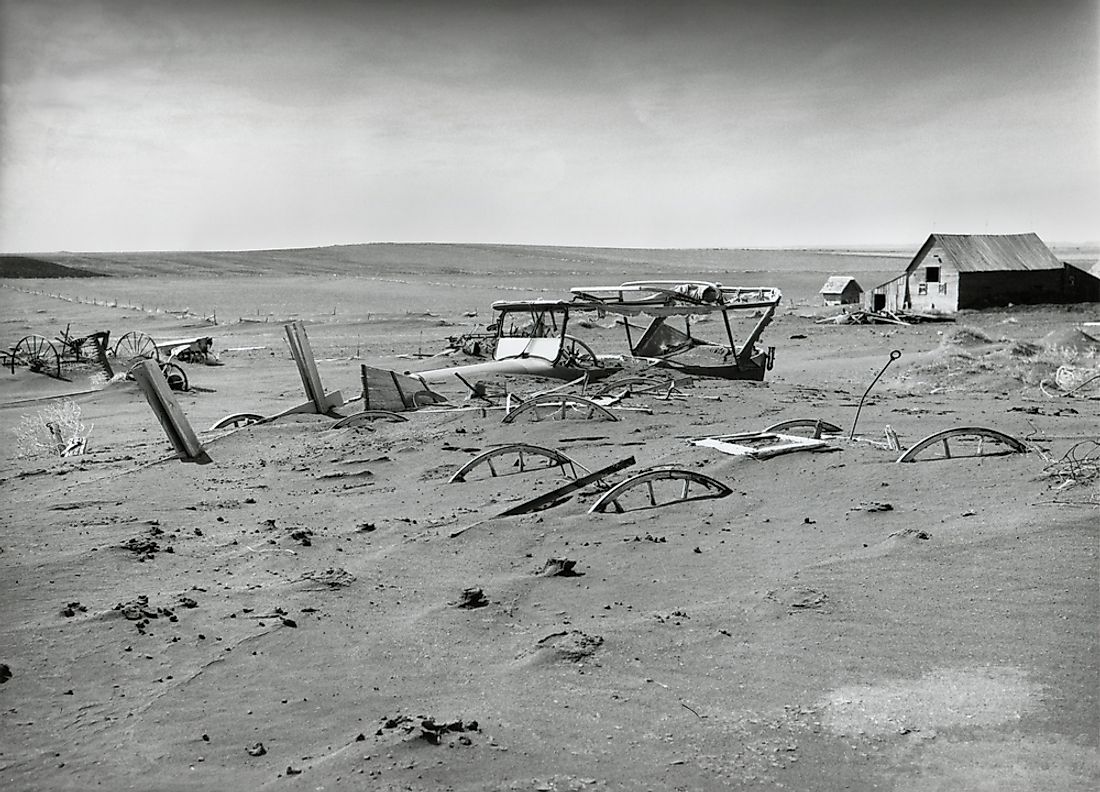Worst Heatwaves in US History

The term heat wave is used to refer to a period in which the weather is much hotter than usual. In some areas, heat waves are accompanied by periods of intense humidity. National definitions of heat waves vary slightly although a few factors are constant such as the fact that heat waves need to last for more than a day before they are classified as heat waves. The definition of a heat wave in the US differs from one region to the next. Due to the country's large size, the climate experienced within its borders varies. The climatic variation is what leads to the differing definitions. The US has been the victim of several devastating heat waves over the years.
Worst Heatwaves in US History
The 1988-1989 Heat Wave
In 1988, the United States was experiencing one of the most intense droughts in recorded history. Up to 45% of the country was affected by drought. This drought brought with it heat waves that were responsible for as many as 10,000 deaths. It was also responsible for the death of livestock.
To make things even worse, the high temperatures led to wildfires. In addition, a tropical storm called Hurricane Gilbert helped spread the heat wave's effects. By the end of the heat wave, the country's agriculture had been irreversibly damaged. The loss was particularly bad in states that significantly relied on agriculture, such as Missouri, where the agricultural loss was estimated at $1.2 billion.
The 1901 Heat Wave
The 1901 heat wave disproportionately affected the East Coast. A drought had occurred in several US territories before the heat wave struck. The fatalities of the heat wave were estimated at close to 9,500 individuals. The intense heat caused the death of horses in large numbers, especially in New York where 250 horses died within 24 hours.
The 1936 Heat Wave
During the 1930's, the US was in the grip of the Great Depression as well as a series of severe dust storms referred to as the Dust Bowl. In 1936 a heat wave struck the US at the end of June. That month, the temperature reached its highest levels. The fatalities in the US caused by the heat wave were estimated at 5,000. The heat wave also led to crop failure.
Climate Change and Heat Waves
The rise in temperatures across the globe contributes significantly to an increase in heat waves. The increased occurrence of heat waves poses a significant number of health risks to residents of every nation. In the US, extreme heat is considered the most deadly natural disaster.
Worst Heatwaves in US History
| Rank | Year | Casualties (Est.) | Location |
|---|---|---|---|
| 1 | 1988 | 10,000 | Eastern and Central United States |
| 2 | 1901 | 9,500 | Eastern US |
| 3 | 1936 | 5,000 | United States |
| 4 | 1980 | 1,700 | Eastern US |
| 5 | 1896 | 1,500 | Eastern US |
| 6 | 1972 | 900 | Northeastern US |
| 7 | 1954 | 300 | United States |
| 8 | 2006 | 220 | North America |
| 9 | 1911 | 146 | New York |
| 10 | 2000 | 140 | Southern United States |











